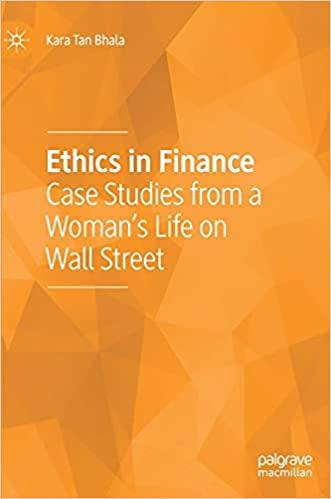Question
. Consider a risk averse investor with utility function U (W ) = W^0.5 who is deciding how much of her initial wealth (W 0)
. Consider a risk averse investor with utility function U (W ) = W^0.5 who is deciding how
much of her initial wealth (W 0) to invest in a bond and how much to invest in a stock.
The current prices of the bond and stock are B0 and S0 respectively. Although neither
security pays dividends or interest, Investor A expects to receive income from selling
these securities at their end-of-period prices, which are B1 for the bond and S1 for the
stock. Since the bond is riskless, its end-of-period price is known with certainty to be
B1= B0(1+r), where r is the riskless rate of interest. The price of the stock at t = 1
can be high or low; i.e., it will be S0(1+s) with probability .6 and it will be S0(1-s) with
probability .4. Furthermore, assume that W 0= $100, r = .05, and s = .3.
A. How much of the investor's initial wealth should be invested in the stock, and how much
in the bond?
B. What will be the investor's expected wealth and standard deviation of wealth at t = 1
from this investment strategy?
C. Suppose that this investor starts out with initial wealth of $200 rather than $100. In
this case, what proportion of her initial wealth should be invested in the stock, and how
much in the bond?
Step by Step Solution
There are 3 Steps involved in it
Step: 1

Get Instant Access to Expert-Tailored Solutions
See step-by-step solutions with expert insights and AI powered tools for academic success
Step: 2

Step: 3

Ace Your Homework with AI
Get the answers you need in no time with our AI-driven, step-by-step assistance
Get Started


